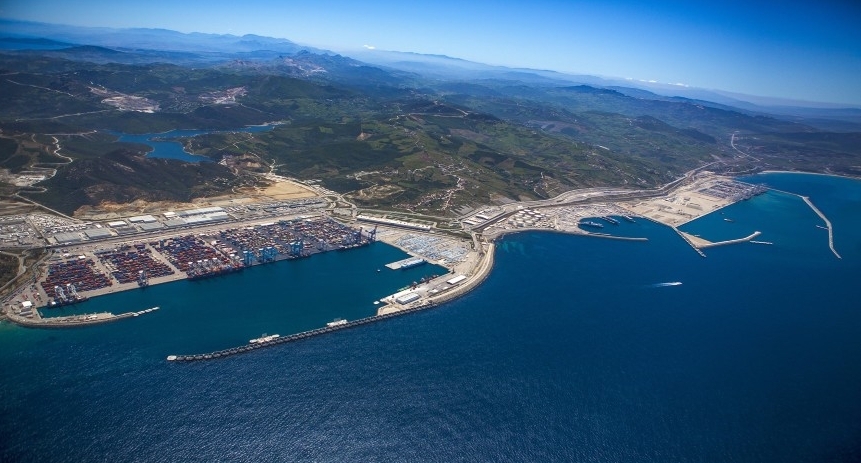Multimodality is the logistics strategy for African recovery
Kenyan government wants to own a multimodal logistics company than three different agencies that handle different modes of shipping.

Multimodal and intermodal are styles of logistics that involves the combination of different transport modes like air, ocean, rail, truck and even pipelines. Enabling businesses to easily move their goods and transfer them from one mode to the other will drive economic growth. Although there are few initiatives visible, countries in the African continent are still struggling from this perspective compared to their counterparts in other continents.
On August 7, 2020, president of the Republic of Kenya Uhuru Kenyatta issued an executive order establishing a framework for the management, coordination and integration of Kenya Ports Authority (KPA), Kenya Railways Corporation (KRC) and Kenya Pipeline Company (KPC) under the newly formed Kenya Transport and Logistics Network (KTLN).
The objective of this move is described as to develop Kenya as a regional logistics hub by leveraging the efficiencies of these state agencies, lowering the cost of doing business in the country and by centralising the coordinated operations.
In other words, the Kenyan government wants to own a multimodal logistics company than three different agencies that handle different modes of shipping.
It is no brainer to understand the logic behind multimodal and intermodal logistics which is to make each mode of transport to serve the other as a feeder for the easy movement of goods. However, to develop a truly integrated form of logistics in any part of the continent will need strong political will, rigorous planning and intelligent investment. The result would be decreased cost of logistics, faster transit times and higher productivity. This could have a positive effect on the intra-Africa trade as well as with other continents.
African countries were growing at a pace of 5 percent every year since the global recession in 2008 and are also increasingly getting industrialised. However, Covid-19 pandemic had a rather devastating impact on countries and are left with contracted GDPs.
Logistic capabilities are the nervous system of any economy and are particularly crucial for African countries which are on the path of its industrialisation. Thus on the path of its recovery the continent must look into its logistics challenges as well as advantages while keeping in mind that being multimodal is the key.
CMA CGM & CEVA Logistics
In June 2020, the French shipping company CMA CGM announced their plan to upgrade their logistics offering in the continent with an increasingly integrated mode of transport services.
CMA CGM Inland Services (CCIS) plans to open up three new hubs in Egypt, South Africa and Nigeria, Africa's three leading economies.
Pascal Hirn, vice president Africa Lines, CMA CGM, said "Investing in deepwater terminals alone is not enough. That needs to be supported by a genuine strategy within the continent."
The strategy is thus to establish positions on trade corridors between the main port hubs and inland areas, while in parallel developing an extensive and integrated range of logistics services. That is why the Group, via its CEVA Logistics subsidiary, recently acquired AMI Worldwide, a major force in logistics in East and Southern Africa.
Meanwhile, CEVA Logistics announced its expansion plan for the African market, through which it aims to become a leading, continent-wide market player.
Three CMA CGM Inland Services (CCIS) facilities are also joining CEVA's network in Mali, Burkina Faso and Ivory Coast. These intermodal sites provide a launch platform for the company's freight management ambitions. They offer freight forwarding services in addition to their full range of inland solutions related to container fleet management and ocean freight value-added services such as reefer management services, stuffing and de-stuffing of containers, dry port and container depot functions. These entities keep their close relationship with CEVA's parent company, the CMA CGM Group.
CEVA is also expanding in Mauritania, where a direct presence has been established with expertise in transit corridor operations, and in Ethiopia, where it plans for a new joint venture with MACCFA Freight Logistics.
Africa has already been successful in building multimodal trade in various parts on the continent. This includes Tangier-Agadir Corridor in Morocco, Durban-Lubumbashi Corridor connecting seven countries in southern Africa, Djibouti-Addis Ababa Corridor that connects Port of Djibouti with industrial hubs in Ethiopia, Abidjan-Lagos Corridor that links Cte d'Ivoire and Nigeria, Mombasa-Kigali Corridor between the two East African cities and Moatize-Nacala Corridor in Mozambique.
Tangier - Agadir
In August 2020, United Nations Conference on Trade and Development (UNCTD) ranked the Port of Tanger Med as the most connected African port in 2020 with 137 direct connections. Situated in the northern tip of Morocco, the cargo seaport is an important part of Tangier - Agadir Corridor. Tanger Med port handled 4.8 million containers in 2019, thus recording the best progress in the top 50 with a growth of 38 percent.
The port also manages a 150-hectare Logistics Free Zone inside the port complex and five other free zones inside the Tangier city with a particular focus on the automotive industry.
Tangier-Casablanca rail is another component of this corridor which runs parallel to the Atlantic coast and connects Tanger Med port with the commercial hub of Casablanca and five other free trade zones while also passing through the Moroccan capital Rabat. The corridor also includes an 800 km expressway.
6000 km Mombasa Lagos Highway
Although the past decade has particularly witnessed several multimodal infrastructure developments in the continent, many are still on paper. The 6000 km Mombasa Lagos highway is one of such dream projects that have the potential to change the landscape of the African economy and the way we define multimodal logistics. It will not only connect the two important African cities but also has the potential to link it with other trans-African highways like Cairo - Gaborone and Tripoli - Windhoek. Also, the fact that both Lagos and Mombasa are important port cities with significant trade links to all parts of the world opens up huge opportunities for multimodal streamlining of freight.
Although Kenya, Uganda, Cameroon and Nigeria have completed their roads, the roads are still unpaved in the countries like the Democratic Republic of Congo and the Central African Republic. These routes are almost impossible to commute let alone to move goods, particularly after rain.
Let's recover in the multimodal style
Though the need for multimodal logistics is different in different African countries as some of them are landlocked while others have difficult geographical features, the key towards a multimodal future is in collaborating as not one country could make a perfect system. It is also important that more and more logistics stakeholders understand the importance of freight through the multimodal way and pushing for the same. This includes the governments like that in the Republic of Kenya or global logistics players like CMA CGM.
While we are yet to see the light of recovery from the Covid-19 pandemic and the economic downturn it caused, the way back and the one forward is to build a robust logistics infrastructure with multimodality at its core philosophy.


